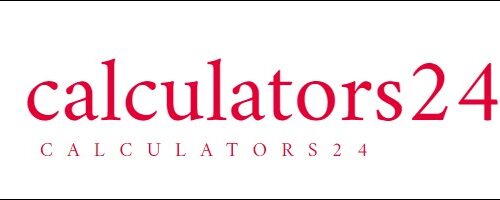Unveiling the Potential: Exploring the Realm of Graphing Calculators
A Graphing Calculator stands as a dynamic mathematical instrument, empowering users to delve into the visual and analytical realms of mathematical functions and equations through graphical representations. This multifaceted tool finds its applications in education, engineering, science, and various fields where intricate mathematical computations and visualizations are imperative. Let's embark on an in-depth exploration of the features and applications that define the essence of a Graphing Calculator.
Key Features and Functions:
1. Graph Plotting Mastery:
At the heart of a Graphing Calculator lies its prowess to plot mathematical functions and equations seamlessly onto a coordinate plane. Users can input equations in diverse forms, ranging from linear and quadratic to trigonometric and exponential functions.
2. Embracing Multiplicity:
Flexibility is key, as users can graph multiple functions on a single coordinate plane. This capability facilitates visual comparisons and intricate analysis, unlocking a new dimension of mathematical exploration.
3. Zoom and Pan Dynamics:
Graphs come to life as users zoom in or out and pan across the coordinate plane, unraveling specific regions of interest with meticulous detail. This dynamic feature adds a layer of precision to the visual analysis of mathematical concepts.
4. Data Insight with Tables:
Many Graphing Calculators offer tables of values corresponding to graphed functions. This feature aids users in examining specific data points, fostering a deeper understanding of the mathematical landscape.
5. Equation Resolution:
Some models elevate the experience with equation-solving capabilities, empowering users to discern roots, intersections, and critical points of equations with unparalleled ease.
6. Graphical Customization:
The user experience is further enriched through graph customization options. Colors, line styles, and labels can be tailored to individual preferences, enhancing the visual representation of mathematical concepts.
7. Beyond the Basics: Parametric and Polar Equations:
Venturing into advanced mathematical concepts, Graphing Calculators often support parametric and polar equations. This expands the horizons of exploration for users with a penchant for mathematical intricacies.
8. Statistical Analysis:
Incorporating statistical functions, certain models cater to data analysis needs, including regression analysis, histograms, and scatter plots. This makes Graphing Calculators valuable assets in scientific research and analysis.
Applications of a Graphing Calculator:
1. Educational Odyssey:
Graphing Calculators find a natural habitat in mathematics classrooms across various educational levels. From high school to college, they serve as indispensable aids in comprehending mathematical concepts through visual representation.
2. Engineering Marvels:
Engineers harness the power of Graphing Calculators to dissect and graph intricate engineering equations. These calculators emerge as essential problem-solving companions in domains such as electrical and mechanical engineering.
3. Scientific Prowess:
Scientists leverage Graphing Calculators to visualize experimental data, model scientific phenomena, and dissect trends within datasets. The graphical representation adds a layer of clarity to complex scientific analyses.
4. Financial Wizardry:
In the realm of finance, professionals utilize Graphing Calculators for diverse financial calculations, including loan amortization and investment analysis. The calculator's efficiency becomes a boon for intricate financial problem-solving.
5. Architectural Canvas:
Architects and designers wield Graphing Calculators as tools for creating and visualizing geometric shapes and patterns, breathing life into their projects with mathematical precision.
6. Researcher's Toolkit:
Across diverse disciplines, researchers employ Graphing Calculators to analyze and present data in visually comprehensible formats. This aids in conveying complex research findings in a digestible manner.
7. Standardized Test Allies:
Graphing Calculators find prominence in standardized tests like the SAT and ACT, where they provide invaluable assistance to students grappling with complex mathematical problems.
Advantages of Embracing Graphing Calculators:
1. Visual Enlightenment:
Graphing Calculators usher in a visual representation of mathematical functions, rendering complex concepts more accessible and comprehensible.
2. Problem-Solving Prowess:
These calculators act as adept problem-solving companions, aiding users in solving equations, identifying roots, and dissecting functions with precision.
3. Efficiency Unleashed:
The swift and accurate calculations performed by Graphing Calculators translate into time savings, especially in the realm of intricate mathematical tasks.
4. Educational Empowerment:
Enhancing the learning experience, Graphing Calculators allow students to interactively explore mathematical concepts, fostering a deeper understanding.
5. Versatility at its Core:
From basic arithmetic to advanced calculus, Graphing Calculators seamlessly support a wide range of mathematical functions, establishing themselves as versatile tools.
In conclusion, the Graphing Calculator emerges as a formidable ally in the realm of mathematical exploration, analysis, and problem-solving. Its adaptability and knack for visualizing mathematical functions position it as an indispensable tool in education, engineering, science, and myriad other fields where mathematics takes center stage. Whether within the confines of a classroom or in the dynamic landscape of a workplace, a Graphing Calculator empowers users to grasp, apply, and appreciate mathematical principles with unparalleled finesse.
